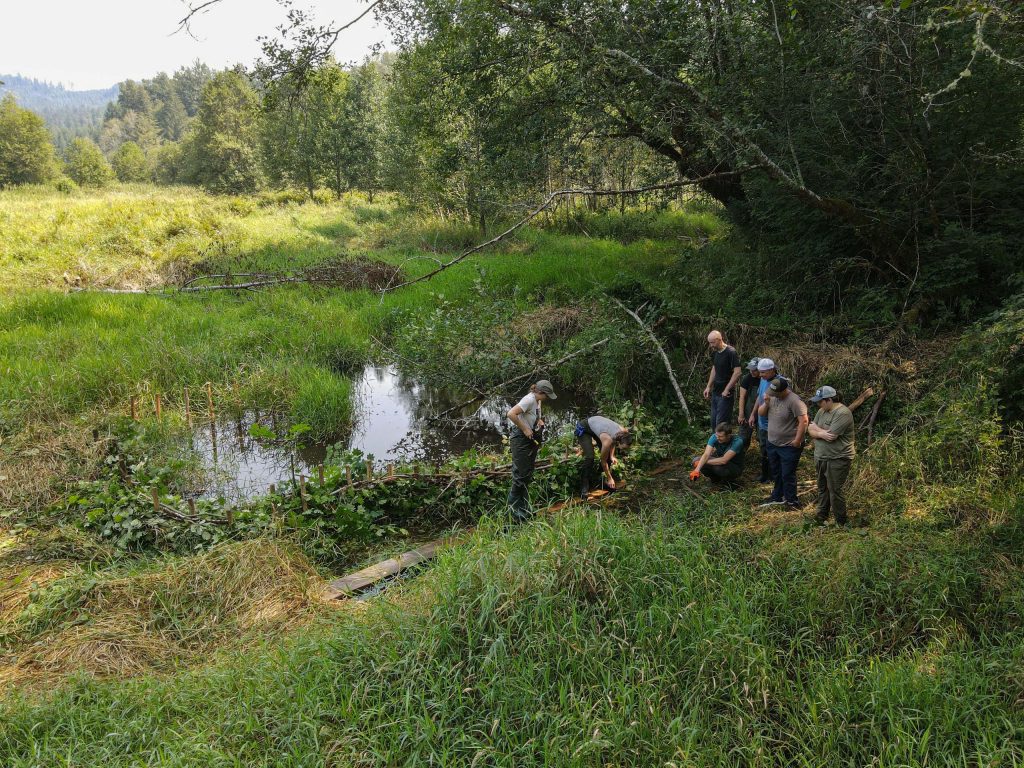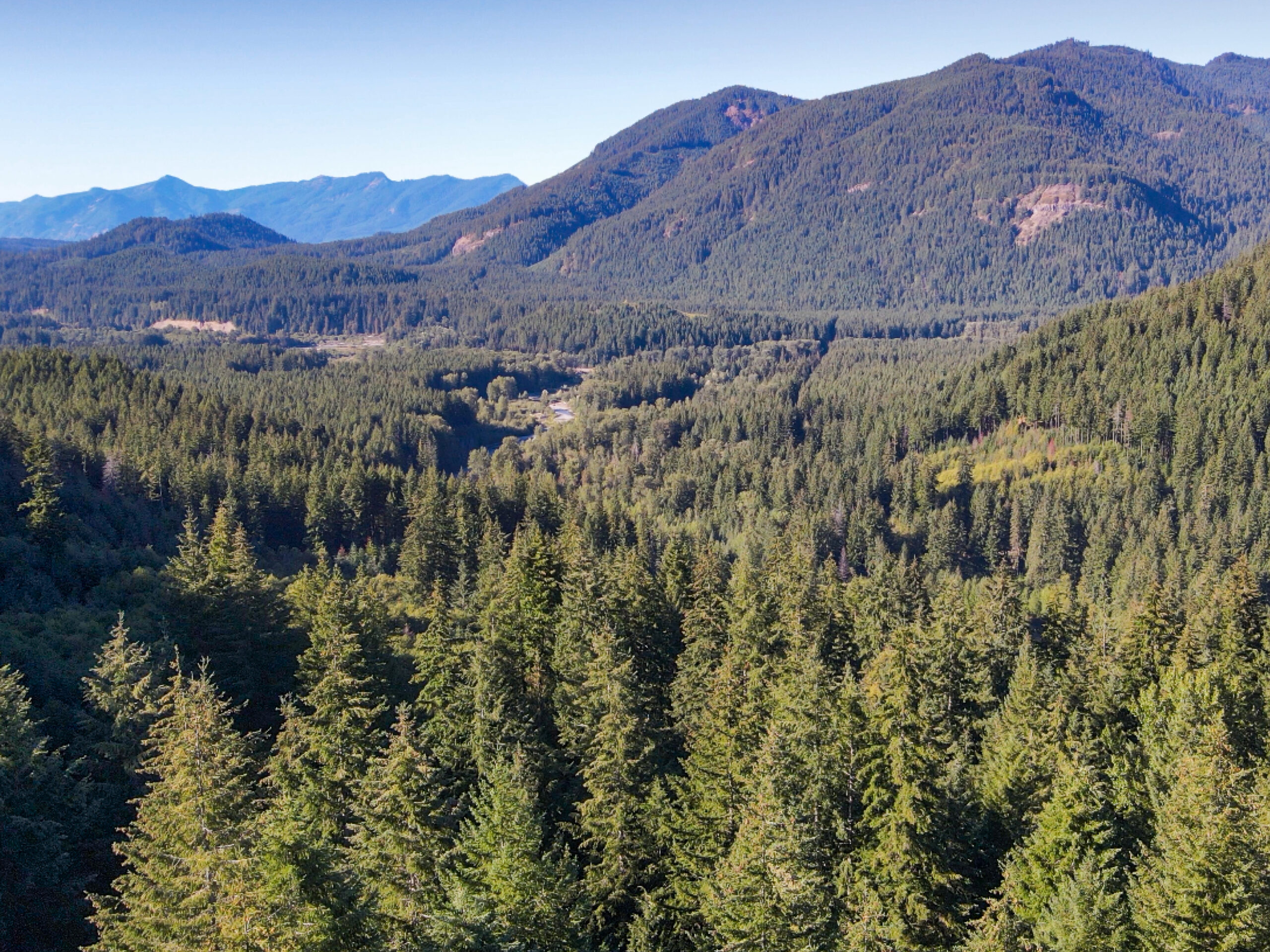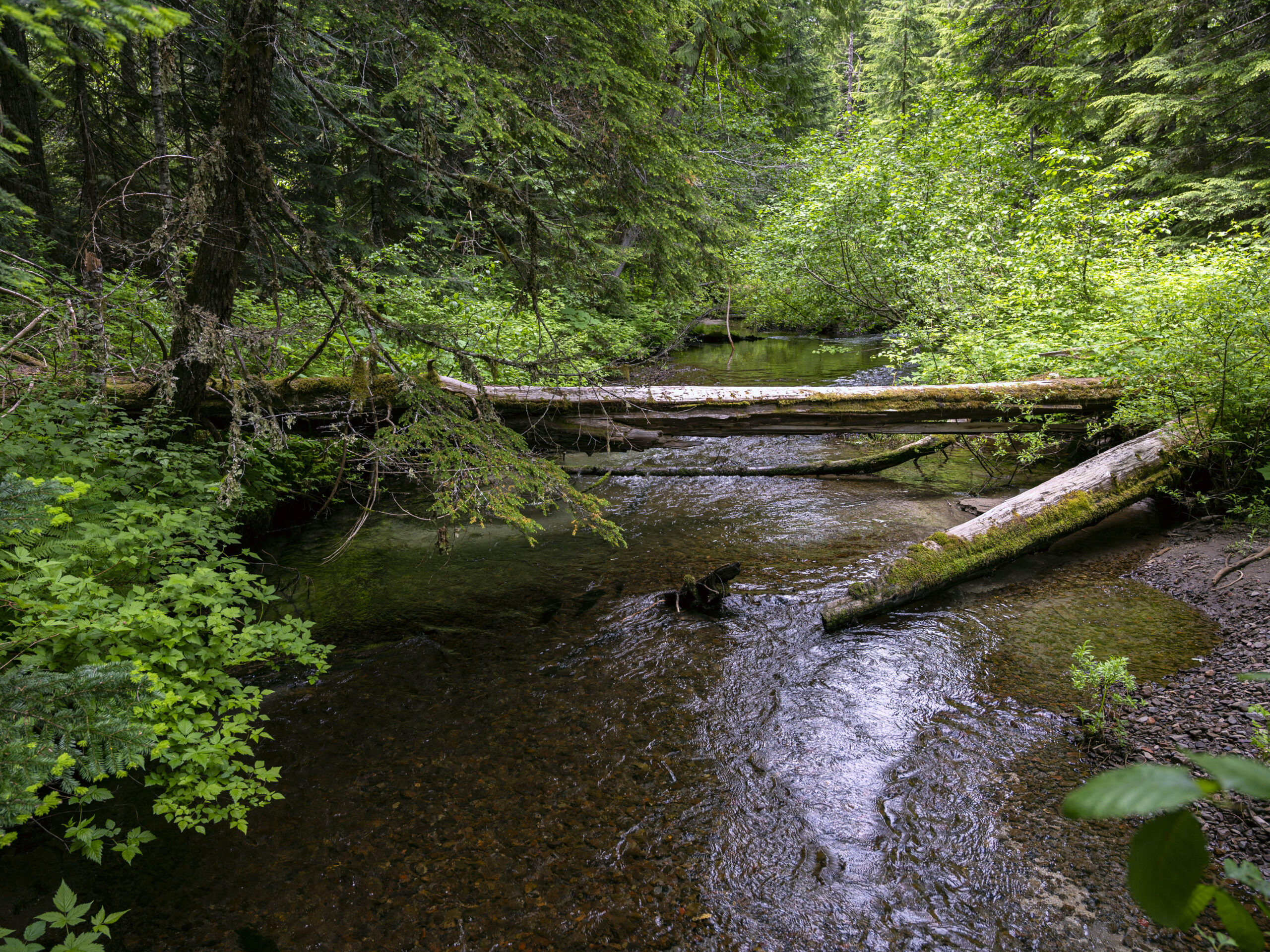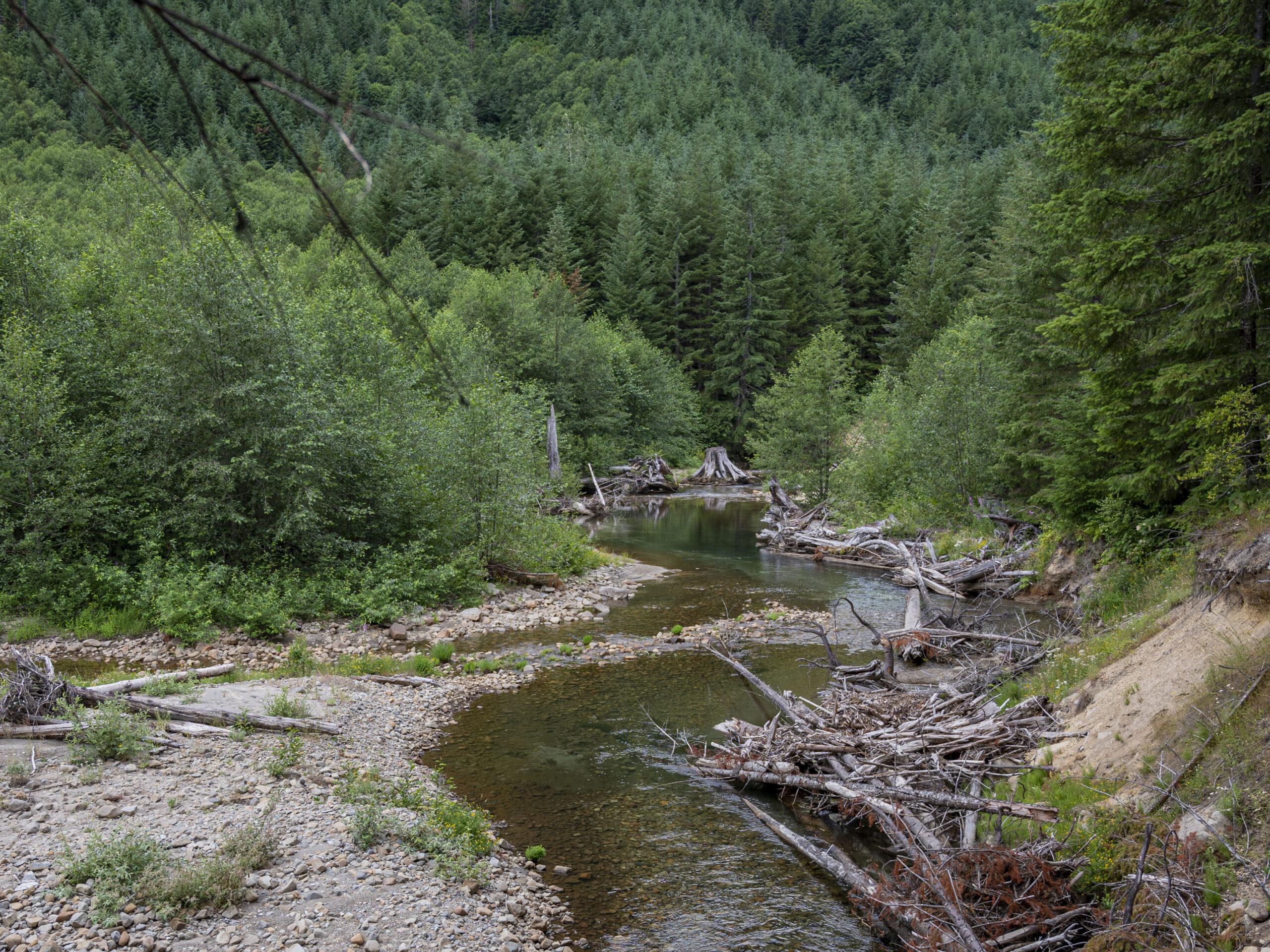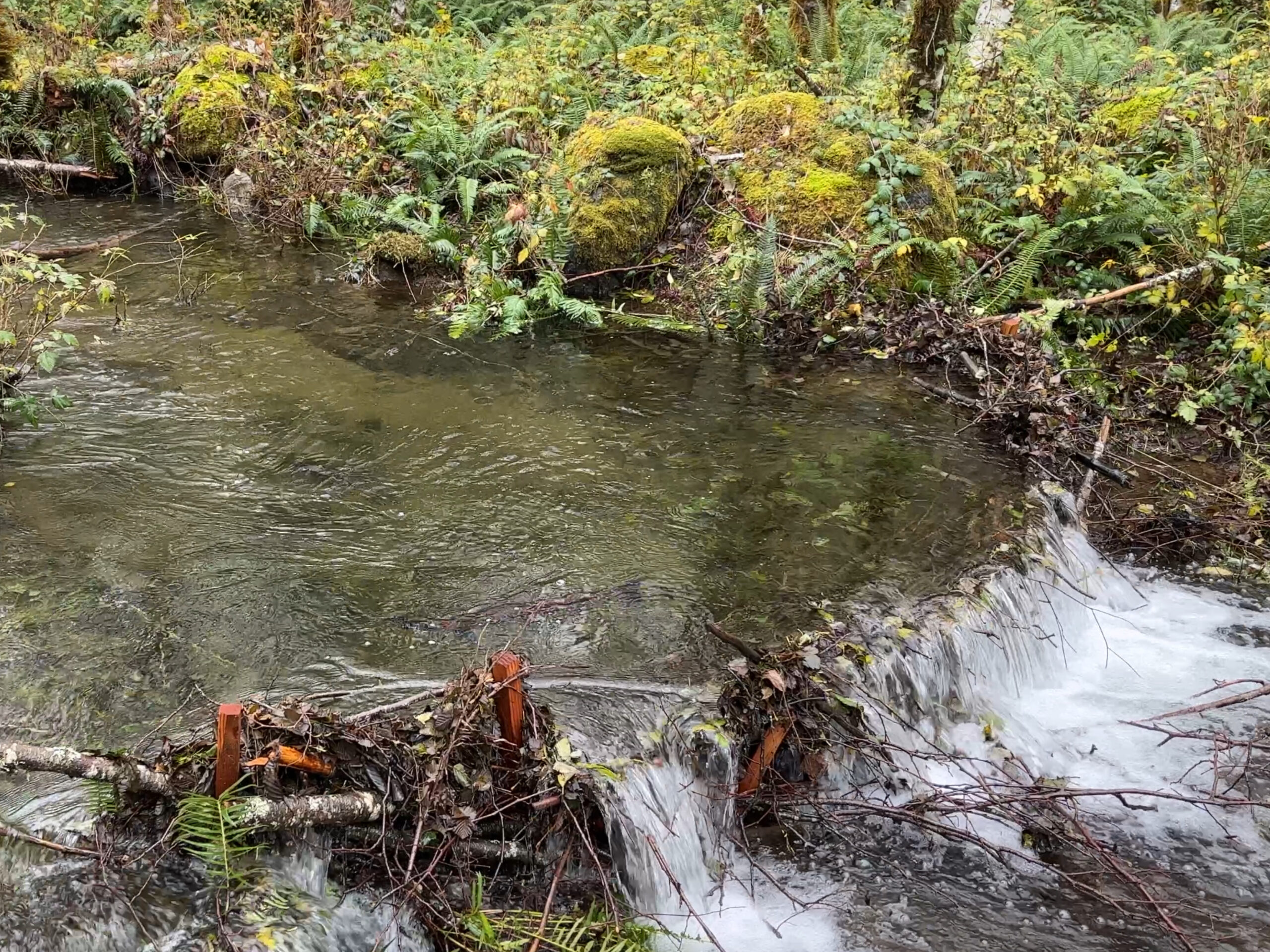As a quick recap, beaver dam analogs are man-made structures that are created to mimic the form and function of natural-made beaver dams. Check out the first blog post in this series to learn more about beaver dam analogs and the benefits they provide to an ecosystem. There are a variety of reasons why you might install a BDA, but for us, it was to help the beavers that currently inhabit Woods Creek and hope that they help us in return.
Beavers have been in the Woods Creek watershed for a long time. Different families move in and out of the mainstream and side channels. They repair old dams or create new ones in locations that they would like to see more water. In August of last year, as we were surveying the area to determine if Woods Creek would be well-suited for BDAs, we found three newly built beaver dams. At first we thought, “Do we need to put BDAs where beavers are already building?”. The answer was yes because by installing a series of BDAs where there were already beavers meant that there was a possibility that the beavers would improve upon and maintain what we create. BDAs are created knowing that they will only last a couple of years because the design and implementation of these structures are non-technical. Restoration practitioners often hope that installing BDAs will attract beavers to the area to provide maintenance, but have the benefit of already knowing that beavers are there.
On the week of August 9th, we set out to Woods Creek to see our plan come to life. Donning full-body waders and manual post drivers, Forest Service specialists and CFC staff spent two days building the skeleton of the BDAs. We drove six-foot wooden posts halfway into the ground to serve as a stronghold for the branches that were going to be woven in between. Once the posts were in place, we had a group of volunteers gather alder and maple branches to use to fill in the gaps between the posts. Various thicknesses and lengths of branches were used to ensure any large gaps were filled with natural materials. Beavers are fans of alder and maple, so utilizing those species is another way to ensure that the beavers at Woods Creek would come to check out our work.
One of the recent beaver-made dams was doing a fantastic job at holding back water. While we were out there, we noticed that there was a relic beaver dam that was mostly covered with sediment and vegetation but was still built up higher than the surrounding landscape. It seemed that the beavers were trying to connect their new dam to the old dam, but were about eight feet away from making that happen. We decided to connect the two dams and added more plant material to the top of the beaver dam to get it closer to the height of the old dam. On the other side of the relic dam, we built another BDA that connected to the old dam, through a side channel, and to the tree line.
By Sunday afternoon, volunteers and CFC staff wove their last few branches into the final BDA. Because there isn’t much water in the system right now, we have to wait until the rains come to see how our structures hold up. Until then we have a camera out to see if the beavers are enticed or offended by our work!



